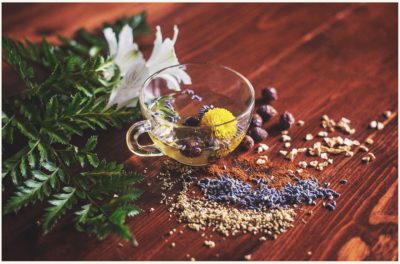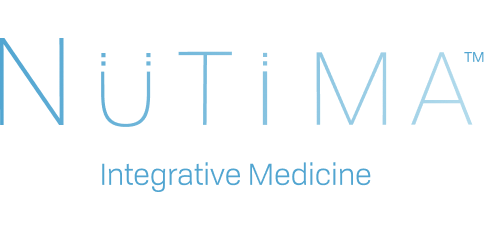
I am continuing to dig into the research literature on the best that we know about anti-aging approaches as I prepare for my anti-aging class on January 22nd. My first blog discussed the science behind caloric restriction. For today’s article, I am looking into the best herbal remedies to help with aging.
Consumer Beware
First, it should be stated that many companies make grand claims about their products, claims that may or may not be research verified. Before your part with your hard-earned cash, please consider that there is very little regulation about what product companies can claim. Pharmaceuticals must provide proof that their products do what they say. However, skin creams and other anti-aging elixirs are not held to that same standard.
One other prudent point- before dropping hundreds of dollars on fancy topical products, try not to skip the lifestyle things that make a huge impact. Regular exercise, quality sleep, a diet rich in fruits, vegetables and whole grains and stress management may not make headline news. But these things are the bread and butter of graceful aging. Realize that in the absence of these important lifestyle choices, topical products are unlikely to yield terrific results. Your best likelihood of success with come from lifestyle changes combined with the best researched topical products.
The Research
In one published conference report, 60 women were given either a topical gel-based green tea extract (2% epigallocatechin gallate) compared to a placebo group. 83.3% of the treated women reported an improvement in wrinkles, compared to 10% of the untreated group. However, this article was never actually published, so it is difficult to assess the quality of the study (1).
In one study, participants applied a cream of date kernel to half of their faces. 50% of the volunteers reported an improvement in their wrinkles. Additionally, silicone molds of their crow’s foot area (the area around the outside of the eye) showed some reduction in wrinkles. This article failed to include most of the actual data and statistics, so it is also difficult to assess the quality of this article (unfortunately, this is a bit of a theme in anti-aging research!) (1).
In another study, volunteers applied a 0.5% peony (Paeonia lactiflora) face cream to half of their face for 8 weeks. There was a significant reduction in wrinkles for the treated part of the face, according to the volunteers. This study also used a dermatologist that was unaware of which side of the face was treated and the dermatologist was also able to predict the treated part of the face (and the results were statistically significant). Again, the data reporting was of mediocre quality (1).
Oxidative damage is a cascade of tissue damage and injury that has been associated with aging. Oxidative damage happens for a variety of reasons- environmental toxins, stress, a poor diet, our own metabolic processes, too much alcohol and many other reasons. In one study, Angelica sinensis (a traditional Chinese medicine herb) demonstrated positive results in repairing oxidative damage and the cellular toxicity from this damage in cell cultures. Because this was cell cultures, it is very difficult to assess whether this result would hold in actual human clinical trials (2).
Telomeres are extra sequences on the ends of our chromosomes and it is believed that as they get shorter throughout life, aging occurs. Long carbohydrates from the herb Astragalus membranaceus have been shown to help increase the ability to repair the ends of chromosomes in zebrafish. Again, whether these results hold true for humans is an outstanding research question, but if so, the implications of this could be significant (2).
Two long carbohydrates from a mushroom reishi (Ganoderma lucidum) and the herb Astragalus membranaceus have been shown to extend the life span of a species of worm used in research (C. elegans). From a naturopathic perspective, we highly respect mushrooms for their health-promoting properties and it would be easy for me to recommend that individuals drink reishi tea, regardless of the research on worms. And astragalus is viewed as an adaptogen- an herb that helps us balance our stress response. So, traditional naturopathic herbology could easily make these prescriptions (2).
In one study, rosemary demonstrated capacity as an anti-oxidant (and thus, something that repairs oxidative damage) and had some positive effects at correcting stress-induced skin damage. The anti-oxidative activity was similar to the strength of vitamin E oil, which is considered a fairly potent anti-oxidant (3).
Antioxidants in grape seed and grape leaf are also very potent antioxidants, the most famous of which is called resveratrol. Many people are excited about resveratrol because it’s a known ingredient in wine. However, alcohol creates a significant degree of oxidative damage, so I prefer to get my resveratrol from concentrated berry and grape products. In one study, grape extract outperformed vitamin C and E in repairing the skin after oxidative damage. Other studies in animals have shown anti-oxidative, anti-inflammatory and anti-carcinogenic properties of grape extract (3).
In terms of skin lightening, one study states that extract from licorice (Glycyrrhiza glabra) is a safe skin-lightening agent with few side reported side effects. It also has anti-inflammatory properties and may decrease skin inflammation. It has not shown much effectiveness for wrinkles, but it may have positive results on photoaged skin (3).
Aframomum angustifolium is a relative to culinary ginger that grows in Africa. This herb has shown some effectiveness as an anti-aging botanical in a handful of studies. It appears that it may have some effect at repairing DNA. 28% of research participants in one study reported over 50% improvement in their skin redness, pigmentation and fine lines compared to 11% of the placebo group (3).
Kinetin, a plant hormone, has shown some anti-aging and lifespan promoting effects in fruit flies. In humans, one study showed improvement in skin texture, color, blotchiness and wrinkles after 24 weeks of use. Another study suggests that kinetin may be useful for treating mild to moderate rosacea (3).
Take Home Message
This list of herbal anti-aging products is by no means exhaustive. There are absolutely other products that I have skipped that deserved mentioning. This list does, in my opinion, serve as a place to begin your search. If a product utilizes one or more of these ingredients, I am going to be more likely to trust the product, knowing that there is at least some research on the chosen ingredients.
And as I mentioned at the beginning of this article, please don’t skip the lifestyle practices! It may feel easier to just rub our skin with cream versus making time to cook, sleep, exercise and relax. However, I have significant more confidence in the power of our daily habits for help us age gracefully.
About the author:
Dr. Lauren Gresham is a naturopathic physician and Certified Community Health Educator. She is happy to work with you on all your anti-aging needs.
- Review, A. S. (2010). Botanical Extracts as Anti-Aging Preparations for the Skin A Systematic Review, 27(12), 973–986.
- Li, H., Hu, M., Xiao, L., Zhang, J., Xiang, Y., & Huang, Z. (2014). Polysaccharides from Medicinal Herbs As Potential Therapeutics for Aging and Age-Related Neurodegeneration, 17(2), 201–204. https://doi.org/10.1089/rej.2013.15133.
- Cronin, H., & Draelos, Z. D. (2010). Top 10 botanical ingredients in 2010 anti-aging creams, 218–225.

Have you heard of Butterfly Pea flower? I steep it and drink as a tea. “Clitoria ternatea, commonly known as Asian pigeonwings, bluebellvine, blue pea, butterfly pea, cordofan pea and Darwin pea, is a plant species belonging to the family Fabaceae. Wikipedia”
I have heard of it. Are you suggesting this tea as something for anti-aging?
Yes.
Like green tea, Butterfly Pea Flower tea is full of potent antioxidants, and has even been studied for its ability to help protect the skin against premature aging (it fights against glycation, which is protein damage caused by an influx of sugar molecules).